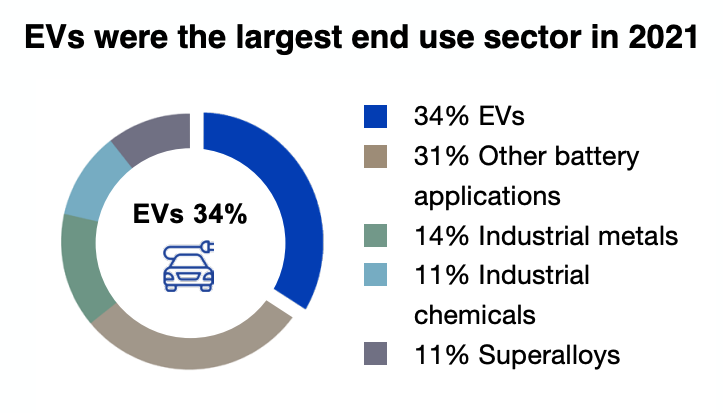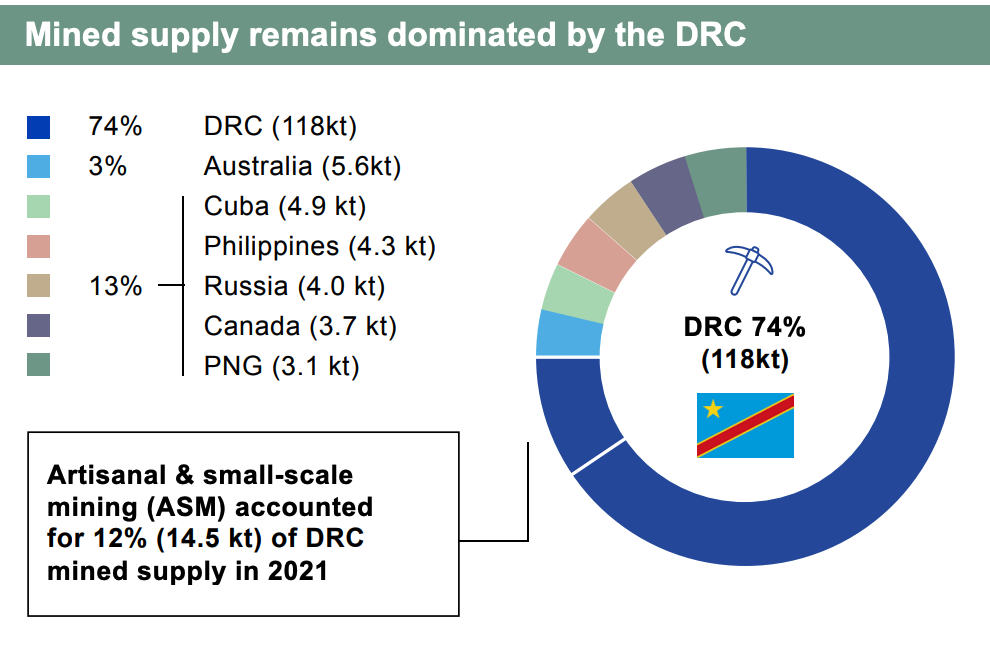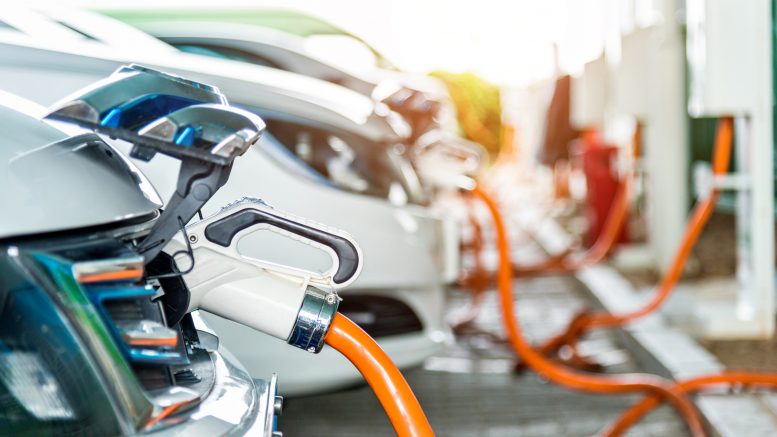Electric vehicles (EVs) overtook smartphones and other high-tech devices for the first time last year as the main driver of cobalt demand, with the sector consuming 59,000 tonnes of the battery metal or 34% of the total globally.
According to a report published on Tuesday by the Cobalt Institute, cellphones manufacturers consumed 26,000 tonnes of the metal used in lithium-ion batteries, while laptops and tablets accounted for 16,000 tonnes of the total demand, which reached 175,000 tonnes.
The figure contrast with the 160,000 tonnes of cobalt mined last year, highlighting one of the biggest issues the car industry faces as it goes electric — the lack of battery metals.
Not surprisingly, prices for cobalt, nickel, lithium and copper have skyrocketed as of late. Cobalt has nearly tripled in price since the start of 2021. Nickel turned so wild in March the London Metal Exchange (LME) had to suspend trading.

Battery-makers have responded by using more lithium-iron-phosphate chemistry, which doesn’t use either cobalt or nickel, but that tighten up the lithium market itself with spot prices doubling since the start of the year.
Benchmark Mineral Intelligence estimates the global lithium industry needs as much as US$42 billion of investment by the end of the decade in order to meet demand
MINING.COM’s EV Metal Index, which tracks the value of battery metals in newly registered passenger EVs (including full battery, plug-in and conventional hybrids) around the world, totalled US$1.5 billion in December, an increase of 192% over the same month of 2020.
“Securing access to raw materials is crucial if the world is to achieve the sustainable and just transition to a greener future,” David Brocas, head Cobalt Trader at Glencore and chairman of the Cobalt Institute’s executive committee said. “Cobalt’s role in batteries and recycling makes it one of the critical materials of a climate-neutral future.”
The metal, a byproduct of copper and nickel mining, makes up only 0.001% of the earth’s crust. Its appeal to EV makers comes from the fact that it provides batteries with energy density that increases the range of their vehicles and boosts their life.

Supply comes mainly from the Democratic Republic of Congo, where production is dominated by miner and commodities trader Glencore (LON: GLEN) as well as Chinese companies.
The institute expects cobalt demand to keep growing to about 320,000 tonnes annually in the next five years, almost double the total consumed in 2021.
It also sees supply picking up this year and next, leading to a more balanced market. From 2024, cobalt availability will wind down again, growing 8% a year, compared to more than 12% of demand growth, which will leading to significant deficits.
Some manufacturers, such as Tesla (NASDAQ: TSLA) and Volkswagen have even announced intentions of becoming “actively involved in raw materials business.”


Be the first to comment on "Electric vehicles surpass phones as top driver of cobalt demand"